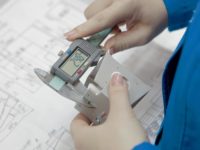Quality 101
The Importance of Calibration
Calibration is essential from both a technical and business perspective.

Source: Funtay / iStock / Getty Images Plus via Getty Images
Calibration is a fundamental process that ensures accuracy and reliability in measurement. It is the process of comparing the measurement values obtained from a device or instrument to the standard values to determine the accuracy of the device. In this article, we will discuss the basics of calibration, its importance, the different methods used for calibration, and the latest developments.
Part 1: What Is Meant By Calibration?
Calibration is the process of comparing a measurement device or system's accuracy to a standard. The goal of calibration is to ensure that the device or system provides accurate and reliable measurements. Calibration is a critical aspect of many industries, including manufacturing, healthcare, and environmental monitoring. The accuracy of measurement devices is essential in ensuring that products meet quality standards, the equipment operates efficiently, and regulatory compliance is maintained.

Part 2: Why Is Calibration Important Both From A Technical And Business Perspective?
Calibration is essential from both a technical and business perspective.
- From a technical perspective, calibration ensures that measurements are accurate and reliable. Inaccurate measurements can lead to faulty products, equipment failures, and even safety hazards. For example, an improperly calibrated blood pressure monitor could lead to incorrect readings, resulting in a misdiagnosis or improper treatment.
- From a business perspective, calibration is essential for maintaining customer satisfaction and regulatory compliance. Calibration ensures that products meet quality standards and are safe for consumers. Additionally, regulatory bodies, such as the FDA and EPA, require calibration for compliance with regulations.
Part 3: Calibration Methods
There are different methods used for calibration, depending on the type of device or instrument being calibrated. Some common calibration methods include:
- Traceability to a National Standard: This method involves calibrating the device or instrument against a reference standard that is traceable to a national standard.
- Inter-laboratory Comparisons: This method involves comparing the measurement values obtained from the device or instrument to those obtained from a different laboratory using the same or a similar device or instrument.
- Self-Calibration: This method involves the device or instrument calibrating itself by comparing its measurement values to its own internal standard values.
- Reference Material Calibration: This method involves calibrating the device or instrument using reference materials of known values.
- Accredited Calibration: This method involves having the device or instrument calibrated by a third-party calibration laboratory that is accredited to perform calibration services.
The frequency of calibration depends on the type of device or instrument being calibrated, the manufacturer’s recommendations, and the specific industry regulations. Some devices or instruments require daily calibration, while others may only need calibration once a year.
Part 4: The Calibration Process
Calibration is the process of comparing the measurement values of an instrument or equipment with a known standard to determine its accuracy. The process can be done in-house using calibration equipment or by a third-party calibration service. The steps involved in the calibration process are selecting a standard, preparing the instrument, comparison, adjustment, and recording.
To illustrate how to perform a calibration, let’s consider an example of calibrating a digital thermometer used in a food manufacturing plant.
- Selecting a standard. The first step is to select a reference thermometer with a known accuracy as the standard for comparison. The standard can be a reference instrument or equipment with known accuracy.
- Preparing the instrument. Next, the thermometer must be prepared for calibration by cleaning and inspecting it to ensure it is functioning correctly.
- Comparison. The next step is to take measurements with the thermometer and compare them to the reference thermometer to determine the accuracy of the instrument.
- Adjustment. If the measurements are not within the acceptable range, adjustments can be made to bring them in line with the reference thermometer.
- Recording. Finally, the calibration results are recorded in a calibration certificate, which includes information on the standard used, the calibration method, the date of calibration, and the accuracy of the thermometer.
Part 5: Latest Developments In Calibration Methods
The latest developments in calibration methods include advances in technology, automation, and software. These developments have made calibration more accurate, efficient, and cost-effective. Some of the latest developments in calibration methods include:
- Automated calibration: Automation has made calibration more efficient by reducing the time and labor required for calibration. Automated calibration systems use software and sensors to automate the calibration process.
- Calibration software: Calibration software is designed to simplify the calibration process by providing tools for calibration management, tracking, and reporting.
- Remote calibration: Remote calibration allows calibration to be performed remotely, reducing the need for on-site visits, and saving time and money.
- Wireless calibration: Wireless calibration eliminates the need for cables and wires, making calibration more flexible and reducing the risk of errors.
Conclusion
Calibration is a critical process for businesses that rely on accurate measurements in their operations. The calibration process involves comparing the measurement values of an instrument or equipment with a known standard to determine its accuracy. The latest developments in calibration methods include advances in technology, automation, software, remote calibration, and wireless calibration. Calibrating equipment and instruments ensure that they provide reliable data, meet industry standards, and reduce the risk of errors and product failures.
Looking for a reprint of this article?
From high-res PDFs to custom plaques, order your copy today!





